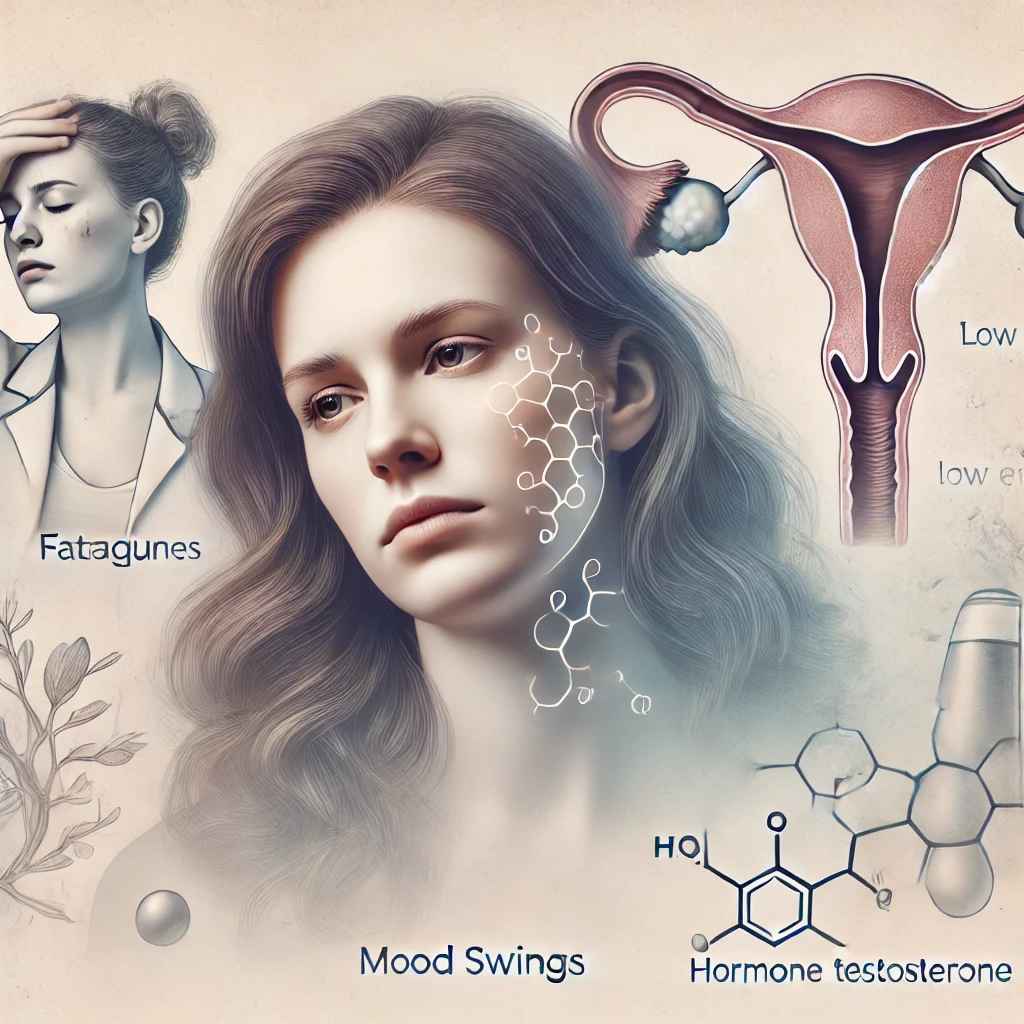When we think of testosterone, we often associate it with men. But did you know that women also produce this hormone? Though in much smaller amounts, testosterone plays a vital role in women’s health, affecting everything from muscle mass to mood and libido. So, what happens when those levels dip too low? Let’s dive in!
Who Can Experience Low Testosterone?
Low testosterone isn’t just a concern for aging women—it can affect women at any stage of life, including adolescents and those who are postmenopausal. However, it becomes more common as women age, especially during and after menopause.
Types of Low Testosterone in Women
There are two main types of low testosterone:
- Primary Hypogonadism – This occurs when the ovaries or adrenal glands don’t produce enough testosterone. Causes can range from genetics to medical conditions and aging.
- Secondary Hypogonadism – In this case, the pituitary gland or hypothalamus (both located in the brain) fails to function properly, leading to reduced testosterone levels.
What Causes Low Testosterone in Women?
A variety of factors can contribute to low testosterone levels, including:
- Ovarian issues: Conditions like ovarian insufficiency or surgical removal of ovaries (oophorectomy) can reduce testosterone production.
- Adrenal disorders: The adrenal glands contribute to testosterone levels, so adrenal insufficiency can be a factor.
- Hormonal imbalances: Hypopituitarism (a condition affecting hormone production in the brain) or prolonged use of corticosteroids and hormonal contraceptives can interfere with testosterone levels.
- Cancer treatments: Chemotherapy and radiation may negatively impact hormone production.
- Medications: Certain drugs, such as opioids and anti-androgenic agents, can lower testosterone.
- Nutritional deficiencies: Malnutrition and conditions like anorexia can also play a role.
Symptoms of Low Testosterone in Women
Low testosterone levels can cause a range of symptoms, both physical and emotional, including:
- Persistent fatigue and low energy
- Decreased sex drive (libido)
- Mood swings, irritability, or depression
- Muscle loss and decreased strength
- Weight gain and increased body fat
- Brain fog (difficulty concentrating or memory problems)
- Thinning hair and dry skin
- Weakened bones, increasing the risk of fractures
- Genitourinary Syndrome of Menopause (GSM): This condition includes vaginal dryness, discomfort during sex (dyspareunia), urinary frequency, and increased risk of infections.
How Does Low Testosterone Affect Fertility?
Testosterone plays a role in regulating ovulation and the menstrual cycle. When levels are low, women may experience irregular or absent periods, making it harder to conceive.
Diagnosing Low Testosterone in Women
If you suspect low testosterone, a doctor will typically conduct:
- A medical history review and symptom assessment
- A physical examination
- Blood tests to measure hormone levels
Treatment Options for Low Testosterone in Women
The right treatment depends on the underlying cause. Some common approaches include:
- Hormone Replacement Therapy (HRT): While not FDA-approved for women, testosterone therapy is sometimes used off-label to treat hypoactive sexual desire disorder in postmenopausal women. Vaginal DHEA (prasterone) is an approved option for severe dyspareunia.
- Lifestyle Changes: A balanced diet, regular exercise, and quality sleep can help support hormonal balance.
- Addressing Underlying Conditions: Managing issues like PCOS or adrenal disorders can help restore normal testosterone levels.
Final Thoughts
Low testosterone in women is more common than many realize, but it often goes undiagnosed. If you’re experiencing symptoms, don’t ignore them—getting the right diagnosis and treatment can significantly improve your well-being. Prioritizing hormonal health means prioritizing your overall health!
If this post resonated with you, share it with other women who might find it helpful. Let’s spread awareness and empower each other with knowledge!

